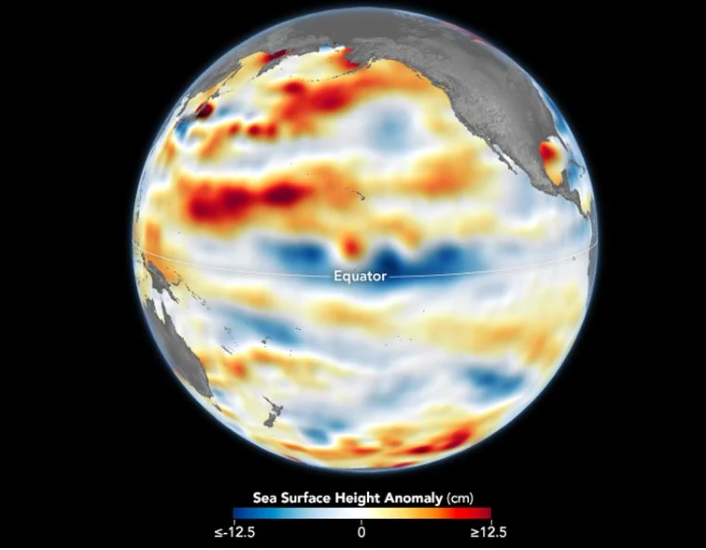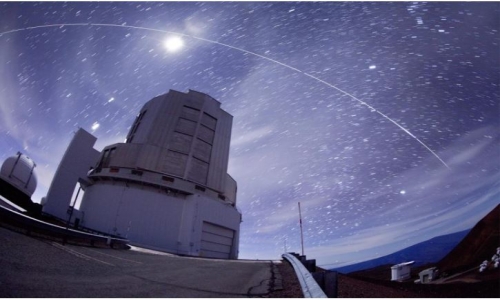


 7:34:24
7:34:24  2025-02-10
2025-02-10  675
675

La Niña has made a long-awaited return, cooling the Pacific and stirring up global weather patterns.
This natural climate phenomenon, part of the ENSO cycle, strengthens trade winds and brings up deep, cold ocean water, altering temperatures and rainfall worldwide. While NOAA confirmed its presence in early 2025, this La Niña is weaker than past events and may not last long.
La Niña Arrives in the Pacific
After seven months of anticipation, La Niña—the cooler counterpart to El Niño—finally emerged in the eastern Pacific Ocean in early December 2024. However, it may be short-lived. According to NOAA, the Pacific could return to neutral conditions by spring 2025.
La Niña is part of the El Niño Oscillation (ENSO) cycle and occurs when stronger-than-usual easterly trade winds drive colder, deep ocean water to the surface in the eastern tropical Pacific. This process cools large areas of the ocean near the equator. As these intensified winds push warm surface waters westward toward Asia and Australia, the atmosphere responds, altering moisture levels and shifting global weather patterns.
NOAA Confirms La Niña Conditions
In a report published on January 9, 2025, the NOAA Climate Prediction Center confirmed that La Niña conditions were present. They measured sea surface temperatures 0.7 degrees Celsius (1.3 degrees Fahrenheit) below average in an area of the tropical Pacific, from 170° to 120° West longitude, known as the Niño 3.4 region.
The signature of La Niña is also visible in the central and eastern Pacific Ocean as areas of lower-than-average water levels. That’s because cooler water contracts, lowering sea levels. (Conversely, warmer water expands, raising them.) The map above depicts sea surface height anomalies across the central and eastern Pacific Ocean as observed on January 13, 2025. Shades of blue indicate sea levels that were lower than average, while shades of red indicate areas where the ocean stood higher than normal. Normal sea level conditions appear in white.
Tracking La Niña from Space
Data for the map were acquired by the Sentinel-6 Michael Freilich satellite and processed by scientists at NASA’s Jet Propulsion Laboratory (JPL). Note that signals related to seasonal cycles and long-term trends have been removed to highlight sea level anomalies associated with ENSO and other short-term natural phenomena.
“Although La Niña is here, it’s not a particularly strong one,” said Josh Willis, an oceanographer and Sentinel-6 Michael Freilich project scientist at JPL. Willis noted that during an especially strong La Niña in 2010-2011, temperatures in the tropical Pacific were about 1.6°C (2.9°F) below average in January 2011, compared to just 0.7°C (1.3°F) below average in January 2025. NOAA forecasts that this La Niña will remain weak and is unlikely to reach -1°C below average—the threshold at which La Niña is considered moderate in strength. Neutral conditions were expected to return in the meteorological spring, between March and May.
Global Weather Disruptions Ahead
La Niña’s coupling with the atmosphere and ocean alters global atmospheric circulation and can cause shifts in the path of mid-latitude jet streams in ways that intensify rainfall in some regions and bring drought to others. In the western Pacific, rainfall can increase over Indonesia and Australia. Clouds and rainfall become more sporadic over the central and eastern Pacific Ocean, which can lead to dry conditions in Brazil, Argentina, and other parts of South America and wetter conditions over Central America. In North America, cooler and stormier conditions often set in across the Pacific Northwest, while weather typically becomes warmer and drier across the southern United States and northern Mexico.
Reality Of Islam |
|

This is the

A computer

Auburn Univ

Poisoning i
 9:3:43
9:3:43
 2018-11-05
2018-11-05
10 benefits of Marriage in Islam
 7:5:22
7:5:22
 2019-04-08
2019-04-08
benefits of reciting surat yunus, hud &
 9:45:7
9:45:7
 2018-12-24
2018-12-24
advantages & disadvantages of divorce
 11:35:12
11:35:12
 2018-06-10
2018-06-10
 6:0:51
6:0:51
 2018-10-16
2018-10-16
 2:2:13
2:2:13
 2022-10-08
2022-10-08
 4:2:19
4:2:19
 2022-10-10
2022-10-10
 11:2:27
11:2:27
 2022-10-06
2022-10-06
 2:11:12
2:11:12
 2022-10-15
2022-10-15
 8:19:41
8:19:41
 2018-06-21
2018-06-21
 10:43:56
10:43:56
 2022-06-22
2022-06-22
 8:3:0
8:3:0
 2018-06-21
2018-06-21
 5:41:46
5:41:46
 2023-03-18
2023-03-18
| LATEST |